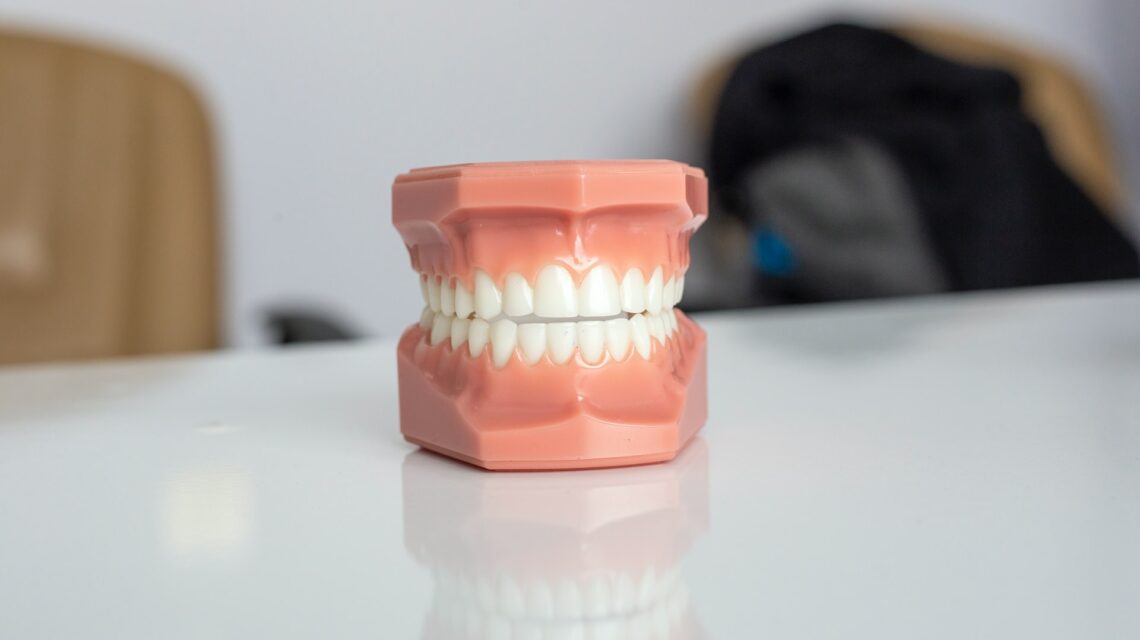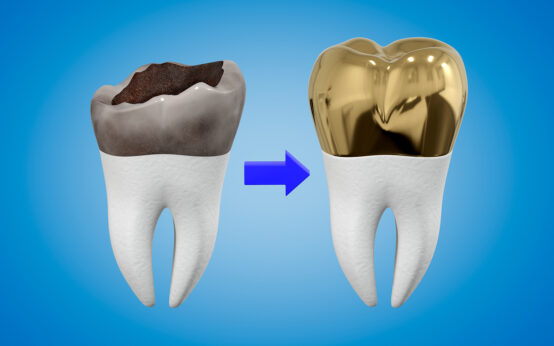The use of cutting-edge technology is what makes an all-ceramic crown possible at Distinctive Dentistry. Compared to other types of crowns, ceramic ones are more durable and natural-looking, and they are safe for those with metal allergies or sensitivities. During your appointment, you can choose to have a traditional metal crown, or you can opt for a ceramic one. Whatever your preference, a ceramic crown is a great option.
Distinctive Dentistry uses cutting-edge technology to make all-ceramic crowns
CEREC stands for Chairside Economical Restoration of Esthetic Ceramics. This technology is the result of computer-aided design and manufacturing. It uses cutting-edge software and equipment to design and craft custom dental prosthetics in one visit. CEREC can create porcelain or composite crowns and inlays/onlays in less than an hour. It has revolutionized the dental industry and allows dentists to provide same-day service to their patients.
This advanced technology is used to create a porcelain or ceramic crowns with exceptional fit and color. Crowns made of this material are durable and look natural. In addition, they maintain a better fit than metal crowns. Metal crowns expand and contract in response to temperature changes, and can break or crack. Ceramic crowns do not contract and are much more resistant to these changes. This means that porcelain or ceramic crowns will last longer, as long as patients maintain proper oral hygiene.
Porcelain crowns are the most affordable option, but there are many disadvantages to this material. These crowns may have a metallic band along the edge of the porcelain layer. They are not as durable as ceramic crowns, but they are more durable than their counterparts. Ceramic crowns are the best option if you're looking for a natural-looking crown. But it is important to know that ceramic crowns are not made from gold or silver.
Ceramic crowns are a durable solution that looks like natural teeth. Ceramic crowns are made with superior quality materials and artistic designs, so they can enhance the look of your smile. They don't stain easily, which means they're not suitable for people who regularly drink coffee. Also, unlike metal teeth, porcelain crowns don't fade with time. As long as you take care of them, you'll enjoy a long-lasting and beautiful smile.
While metal crowns are strong, zirconia crowns can be extremely thin and don't require as much tooth preparation. Zirconia-based crowns outlast their counterparts, particularly when properly cared for. Zirconia-based crowns are also biocompatible. Zirconia doesn't cause an immune reaction and has limited cytotoxicity, two key factors for choosing one of these materials.
They are stronger than porcelain crowns
There are several reasons why a person would want a porcelain crown instead of a ceramic one. Porcelain crowns are strong and look natural, but they are not as aesthetically pleasing as ceramic ones. Porcelain crowns are also better suited for people who are allergic to metal. Porcelain crowns can be made to match the natural shade of the teeth opposite them, which can wear down the surrounding teeth. Porcelain crowns can also chip, so they need to be carefully maintained.
One major reason why ceramic crowns are stronger than porcelain ones is that they are biocompatible. PFM crowns are made of metal and porcelain and have a gold base. The gold base causes an automatic opacity in the porcelain, making it less lifelike inside the mouth. Additionally, when the gums recede, the metal portion of the crown will show through. These drawbacks are a key reason why PFM restorations are generally recommended for patients who want both a biocompatible crown and a strong, natural-looking one.
Another key reason to choose a porcelain crown is aesthetics. Porcelain crowns look more natural than zirconium crowns. Some dentists also offer hybrid crowns, which combine porcelain with zirconia, a durable ceramic. Zirconia can be custom-matched to the color of the teeth of a patient, and it is much more durable than either one alone. Zirconia is also a good choice for patients with metal allergies or concerns.
While there are advantages and disadvantages to both types of crowns, a porcelain crown should last between 10 and 15 years. If you are prone to bruxing or hard candies, porcelain crowns may become damaged. A temporary crown can lead to sensitivity, so it is important to avoid biting hard objects. The crown will then break, and you will have to pay for it again. So, the question is: Which is better?
Porcelain crowns are stronger than metal crowns, but metal crowns are more comfortable and aesthetically pleasing than porcelain crowns. Besides the aesthetics, metal crowns are more durable and require less tooth structure to be crafted. However, metal crowns are not a good choice for patients who grind or clench their teeth. They are not recommended for patients with sensitivity to metals.
They are more natural-looking than other types of crowns
Of the many types of crowns available, ceramic is the most common and gives the most natural look. Unlike metal, which can stain or become allergic over time, porcelain can be made to look just like natural teeth. A downside to porcelain is that it is brittle and can damage adjacent teeth. Patients with teeth grinding habits may find porcelain difficult to maintain, but porcelain is still more natural-looking than metal.
One of the primary reasons why people choose ceramic is because they are more realistic-looking. Ceramic crowns are aesthetically superior to metal-based ones, which can look artificial and fake. Additionally, patients with metal allergies may prefer all-ceramic crowns. Ceramic crowns look more natural and are better suited for front teeth. A porcelain-fused-to-metal crown offers a good balance between aesthetics and affordability.
Another reason why ceramic crowns are more natural-looking than metal crowns is that they are able to match the color of your teeth. This is especially beneficial for people who suffer from metal allergies. They are also a great choice for front or back teeth as they blend in with your natural teeth the best. They will also last longer than metal ones. You can also find ceramic crowns that blend in with your existing teeth.
Zirconia is another material used to create crowns. These are the most durable and hard-wearing ceramic crowns. Unlike other metals, zirconia is made from a naturally occurring metal. They are translucent and long-lasting, and they can withstand chewing forces better than other materials. Zirconia can also be made to look just like natural teeth.
There are pros and cons to both types of crowns. Metal crowns are more durable than ceramic crowns and may be better suited for some patients than others. Metal crowns are more visible than porcelain, so they may be a good choice for back teeth that support bridges. However, they can cause your gums to recede, resulting in dark lines around your tooth.
They are safe for people with metal allergies or sensitivities
There are several ways to avoid metal sensitivity during dental procedures. A dentist must follow safety guidelines to ensure your safety while getting dental work. Metal sensitivity is often associated with the base metal alloy used in the crown. For this reason, if you suspect that you have a metal allergy, it is important to discuss this with your dentist and seek a solution. If your condition does not improve within 24 hours, it may be time to replace the metal crown with a ceramic one.
Despite the safety benefits of ceramic crowns, some metal-sensitive patients may still experience allergic reactions to nickel and beryllium. Therefore, it is vital that you find a dentist who works exclusively with biocompatible materials. For example, you should avoid crowns made of nickel, beryllium, or chromium. Moreover, metal crowns and bridges cause gum tissue irritation and general malaise.
Moreover, ceramic restorations have several benefits. The most obvious benefit is the fact that they do not expose the patient to metals. This means that people with metal allergies or sensitivities can safely receive dental treatment. Ceramic crowns also offer better aesthetics than traditional metal crowns, which can cause metal allergies. People with metal allergies can still be treated with ceramic crowns, but for front teeth, you may prefer a metal-free option.
One disadvantage of metal crowns is that they make a person very sensitive to hot and cold drinks. This is because metal crowns conduct heat, and the change in temperature can cause pain. If this is the case, it is time to replace your metal crowns with ceramic ones. You may also want to opt for an all-ceramic crown. So, if you're considering getting a dental crown, be sure to check the options available to you.
The most obvious disadvantage of gold crowns is their unnatural appearance. Gold restorations are also quite expensive. However, they do not cause much damage to surrounding teeth. Furthermore, gold crowns can cause extra wear on the enamel and can make you sensitive to hot or cold foods. In addition, gold crowns can cause a patient to develop a severe metal allergy. It is advisable to choose porcelain bonded to gold restorations in such cases.
Sources:



 How to Find the Best Teeth Cap Price
How to Find the Best Teeth Cap Price